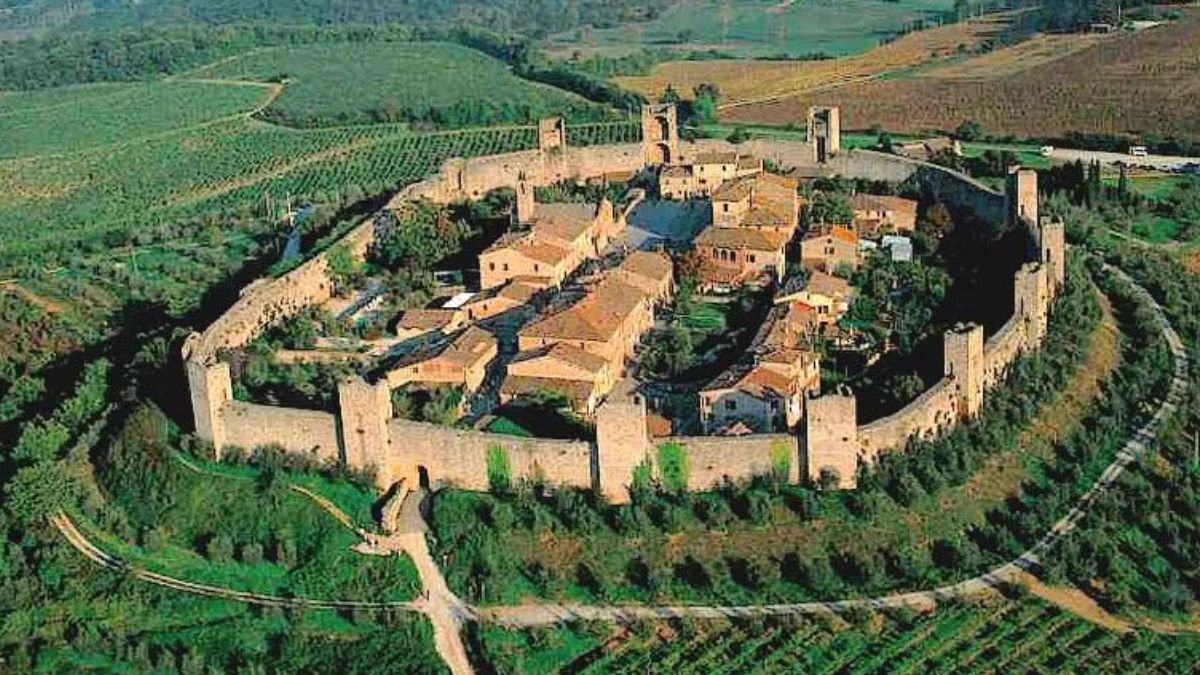Introduction
Nestled in the scenic heart of Olot, in the region of Catalonia, Spain, Montemscopa is not just a dormant volcano—it is a living testament to nature’s powerful past and a symbol of the region’s cultural heritage. Forming part of the Garrotxa Volcanic Zone Natural Park, Montemscopa is one of the most accessible and well-preserved volcanic cones in the area, drawing visitors for its panoramic views, tranquil hiking paths, and historical monuments.
Geographical Setting
Montemscopa stands majestically within the urban setting of Olot, a unique position that allows locals and tourists alike to experience volcanic geography without venturing far from city comforts. The volcano rises between other notable cones like Montolivet and La Garrinada, all of which form part of the Garrotxa Volcanic Zone—Catalonia’s most extensive volcanic area. This region is characterized by over 40 volcanic cones and more than 20 basaltic lava flows, making it a treasure trove for geologists and nature lovers.
Geological Background
Montemscopa is estimated to have formed approximately 100,000 years ago through two primary volcanic events. The first was a low-explosive strombolian eruption that laid the foundation of the cone, followed by a more powerful phreatomagmatic eruption. These explosive forces carved out the volcano’s signature round crater, which spans around 120 meters in diameter and is about 12 meters deep.
Despite the passage of time, Montemscopa’s crater remains impressively intact, offering researchers and tourists a rare opportunity to observe volcanic structure up close. Layers of volcanic ash, scoria, and clay deposits around the site tell the story of its eruptive phases.
Historical Significance
The historical value of Montemscopa goes beyond its natural formation. In the 17th century, a small chapel dedicated to Saint Francis—known as the Hermitage of Sant Francesc—was constructed at its summit. This religious structure quickly became a spiritual retreat and a landmark visible from across the city.
During the Napoleonic Wars, particularly in 1812, French troops occupied Olot and fortified Montemscopa by building two watchtowers next to the chapel. These defensive structures allowed for strategic surveillance of the surrounding landscape, embedding Montemscopa deeply in the military history of the region.
Cultural and Educational Importance
Montemscopa is not just a natural wonder—it’s also an educational hub. Just a short distance from the volcano is Espai Cràter, an interactive museum devoted to the geological and cultural heritage of the Garrotxa region. Here, visitors can explore exhibits on volcanic activity, earth science, and the formation of Montemscopa in a fun and engaging way.
Educational institutions frequently organize field trips to Montemscopa, using the volcano as a real-world classroom. Interpretive signage along the hiking trails also ensures that self-guided visitors can learn about the site’s significance.
Flora and Fauna
Despite its volcanic origins, Montemscopa is brimming with life. The slopes are covered in Mediterranean shrubs, grasses, and trees such as holm oaks and pine. This vegetation supports a variety of birds, butterflies, and small mammals, adding biodiversity to the region.
A small table of common species found on Montemscopa:
| Category | Species Examples |
|---|---|
| Birds | Eurasian jay, Common swift |
| Insects | Painted lady, Swallowtail butterfly |
| Plants | Holm oak, Lavender, Pine |
Tourism and Visitor Information
Montemscopa has become a beloved destination for both local residents and international visitors. Its central location in Olot means it is easy to access, while its gentle slopes and maintained trails make it ideal for hikers of all ages.
Many visitors enjoy walking to the top for a breathtaking 360-degree view of Olot and the surrounding Pyrenean foothills. Benches and rest areas around the crater make it a great spot for picnicking, photography, or quiet reflection.
The site is open year-round and entry is free. Guided tours are often available through local tourism agencies, especially during festivals and holidays.
Access Routes and Hiking Trails
Reaching Montemscopa is easy and enjoyable, with several routes available based on your starting point and physical ability:
- Parc Nou Route: Starting from Parc Nou, this 5 km trail winds through the city and ascends to the volcano, taking about 50 minutes.
- Cemetery Parking Route: A shorter and more direct trail of just 400 meters, ideal for those seeking a quick visit. This path takes around 20–25 minutes.
- Tourist Information Center Route: Beginning at the Olot Tourist Information Office, this scenic trail takes about 45 minutes to complete.
For visitors with limited mobility, it is possible to request vehicle access to the top by contacting the Olot Tourist Office in advance.
Conservation Efforts
Montemscopa benefits from active conservation as part of the Garrotxa Volcanic Zone Natural Park. Efforts are made to preserve the integrity of the volcanic structure while ensuring the area remains safe and accessible for visitors.
Park authorities manage foot traffic, maintain trails, and work on erosion control to protect the site’s ecological balance. Educational initiatives also raise awareness among visitors about the importance of preserving this unique natural monument.
Conclusion
Montemscopa is more than just a scenic hill—it’s a natural museum, a piece of history, and a vibrant part of Olot’s cultural fabric. Whether you’re a geology enthusiast, history buff, casual hiker, or a curious traveler, a visit to Montemscopa offers something enriching and memorable. This extinct volcano continues to inspire and educate, standing tall as a symbol of the region’s dynamic past and promising future.
Other Articles
CechWifeSwap: A Deep Dive into Czech Republic’s Most Dramatic Reality TV Series
Katerina Goltzwart: A Trailblazing Force in Art, Science, and Global Innovation
The Ultimate Guide to Maraca Camera: Features, History, Models & More
GuiadoDinheiroExtra: The Complete Guide to Earning Extra Income in the Digital Age








